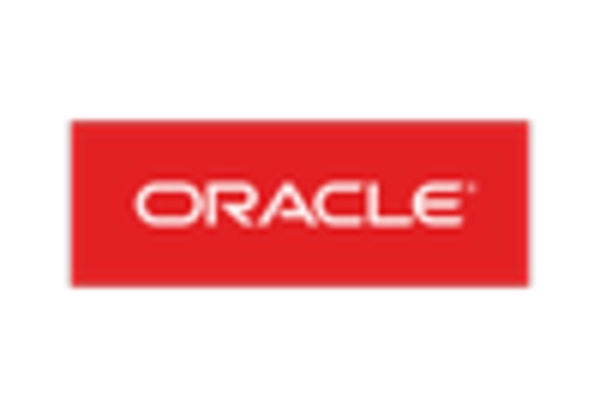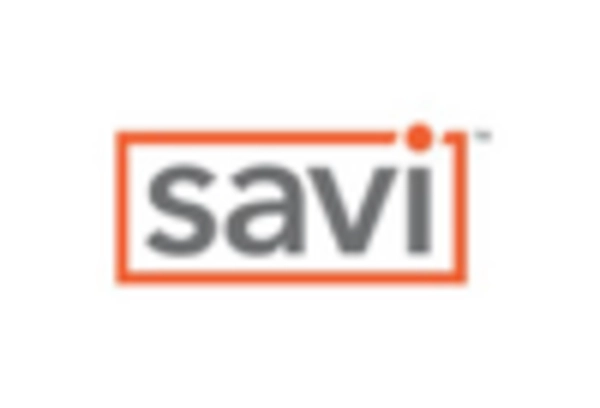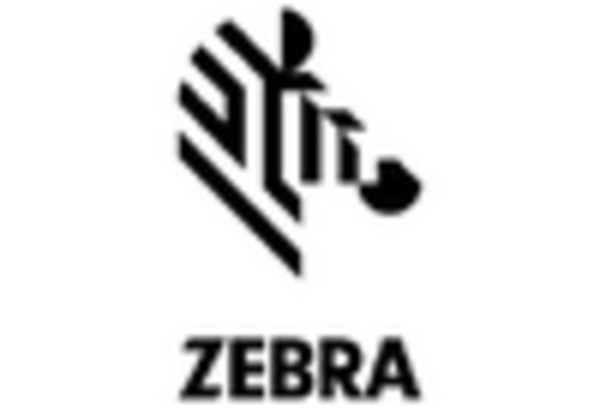Growing Adoption of Mobile Solutions
The growing adoption of mobile solutions is transforming the asset tracking-software market in China. With the proliferation of smartphones and mobile devices, businesses are increasingly seeking mobile-compatible tracking solutions that allow for on-the-go asset management. This trend is particularly relevant in industries such as construction and field services, where real-time access to asset information is crucial. The market is projected to expand by approximately 16% as mobile solutions become more prevalent. These applications enable users to track assets from remote locations, enhancing flexibility and responsiveness. Furthermore, the integration of mobile technology with existing tracking systems is likely to improve user experience and operational efficiency. As mobile solutions continue to gain traction, they are expected to play a significant role in shaping the future of the asset tracking-software market.
Rising Demand for Real-Time Tracking
The asset tracking-software market in China is experiencing a notable surge in demand for real-time tracking solutions. This trend is largely driven by the increasing need for businesses to monitor their assets continuously, ensuring optimal utilization and minimizing losses. In 2025, the market is projected to grow by approximately 15%, reflecting a shift towards more dynamic asset management strategies. Companies are increasingly adopting software that provides instant updates on asset locations and conditions, which is crucial for sectors such as logistics and manufacturing. The ability to access real-time data enhances decision-making processes and operational efficiency, thereby solidifying the importance of real-time tracking in the asset tracking-software market. As organizations strive for greater transparency and accountability, the demand for such solutions is likely to continue its upward trajectory.
Government Initiatives and Regulations
Government initiatives in China are playing a pivotal role in shaping the asset tracking-software market. Regulatory frameworks aimed at enhancing supply chain transparency and asset management efficiency are being implemented. For instance, the Chinese government has introduced policies that encourage the adoption of advanced tracking technologies across various industries. These initiatives not only promote compliance but also foster innovation within the asset tracking-software market. As a result, businesses are increasingly investing in software solutions that align with these regulations, leading to a projected market growth of around 12% in the coming years. The emphasis on regulatory compliance is likely to drive the demand for sophisticated tracking systems that can provide accurate data and reporting capabilities, thereby enhancing overall operational effectiveness.
Increased Focus on Supply Chain Efficiency
The asset tracking-software market is being propelled by an increased focus on supply chain efficiency among Chinese enterprises. As businesses strive to streamline operations and reduce costs, the need for effective asset management solutions has become paramount. Companies are recognizing that efficient tracking of assets can lead to significant improvements in inventory management and logistics. In 2025, the market is anticipated to grow by about 14%, driven by the demand for software that enhances visibility and control over supply chains. This focus on efficiency is prompting organizations to invest in comprehensive tracking systems that provide insights into asset performance and location, ultimately leading to better decision-making and resource optimization. The emphasis on supply chain efficiency is likely to remain a key driver in the asset tracking-software market.
Technological Advancements in Software Solutions
Technological advancements are significantly influencing the asset tracking-software market in China. The integration of artificial intelligence (AI) and machine learning (ML) into tracking solutions is enhancing their capabilities, allowing for predictive analytics and improved asset management. These innovations enable businesses to anticipate asset needs and optimize resource allocation, which is particularly beneficial in sectors such as retail and logistics. The market is expected to witness a growth rate of approximately 18% as companies increasingly seek to leverage these technologies for competitive advantage. Furthermore, advancements in cloud computing are facilitating the deployment of scalable tracking solutions, making them accessible to a broader range of businesses. As technology continues to evolve, the asset tracking-software market is likely to adapt, offering more sophisticated and efficient solutions.
















Leave a Comment